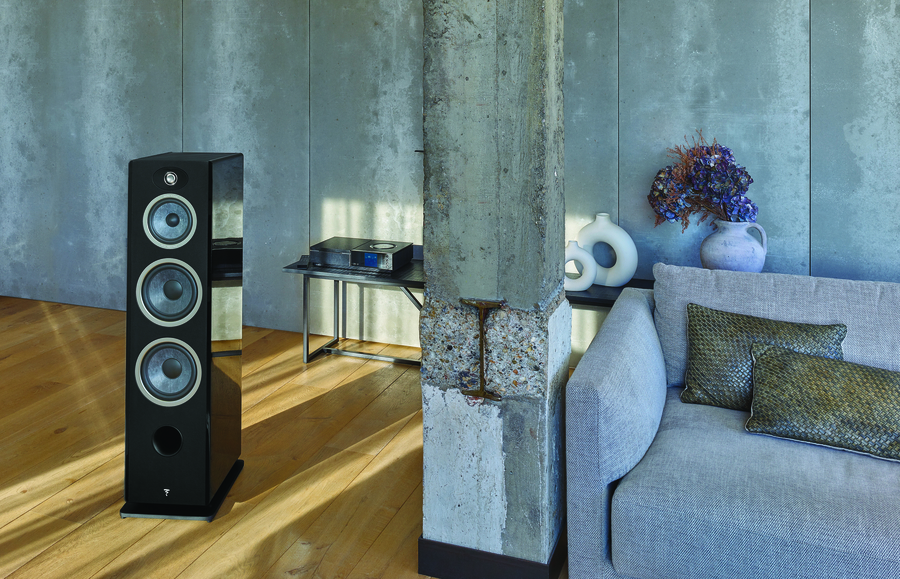What Makes a Speaker Truly High-Quality?
Beyond the Marketing Hype: The Technical Details that Actually Affect Your Listening Experience

Remember the first time you heard your favorite song on a really good sound system? That moment when you noticed instruments you'd never heard before, or suddenly understood why people get obsessed with audio gear? After helping music lovers in the Boston area find their perfect speakers for over two decades, we've learned that great sound isn't about flashy features or marketing buzzwords—and there are plenty of those—but about fundamental engineering choices that most people never think about. Let's explore what separates high-quality speakers from the merely adequate, focusing on the details that make your music come alive.
SEE ALSO: How to Find the Right Speaker for Your High-End Amplifier
Cabinet Design
The box your drivers sit in does more than just hold everything together. A speaker cabinet that resonates or flexes will color every note you hear. The best manufacturers use dense materials like MDF or carefully braced solid wood to create an inert enclosure, one that stays silent while your music plays.
Here's what you'll hear with poor cabinet construction: a hollow, boxy sound that makes vocals seem disconnected from the instruments. Good cabinets disappear acoustically. You shouldn't be able to tell where the sound is coming from when you close your eyes.
Size matters, too, but not how you think. Floorstanding towers aren't automatically better than bookshelf speakers. Your room size and listening distance determine what works. A pair of well-designed stand-mount speakers often outperforms mediocre towers, especially in smaller spaces. The key is matching the speaker's output capabilities to your room and listening habits.
Driver Materials and Design
Walk into our showroom, and you'll see woofers made from everything from traditional paper to exotic ceramics. Each material brings its own character. Paper cones offer a warm, natural midrange—perfect for jazz vocals. Metal drivers like those in many Focal speakers deliver incredible detail and speed, which is ideal for complex orchestral pieces. Composite materials try to split the difference, offering controlled behavior across frequencies.
Tweeters shape your high-frequency experience even more dramatically. Soft dome tweeters (think silk or fabric) give you smooth, relaxed highs that won't fatigue your ears during long listening sessions. Metal domes push more air and deliver razor-sharp detail, but they can sound harsh with poor recordings. Then there's Magnepan's ribbon technology—completely different physics that creates an almost holographic soundstage.
Don't get caught up in driver count. A well-executed 2-way design often sounds more coherent than a 4-way system where the drivers fight each other. Sonic magic happens when all the drivers work together seamlessly, not necessarily when you have more of them.
Crossover Networks
What is a crossover network, and why is it important? The crossover is basically traffic control for your music—it decides which frequencies go to which drivers. A tweeter trying to reproduce bass will fail miserably, just like a woofer attempting delicate cymbal work.
Cheap crossovers use bargain-bin capacitors and inductors that blur timing and muddy the sound. Quality crossovers with premium components keep everything in phase, so when a drummer hits a snare, all the drivers respond at exactly the same moment. You hear it as punch and clarity instead of a smeared, lifeless sound.
The difference is immediate when you hear it. Poor crossover design makes the vocals sound disconnected from the band, as if the singer is in a different room. Good crossovers create that "they're right there in front of you" feeling that makes you forget you're listening to speakers.
Matching Speakers to Your Music and Space
Not all speakers excel at everything. If you're deep into acoustic jazz and folk, you want speakers that handle midrange textures beautifully, where voices and guitars live. Rock and electronic music demand speakers that can move serious air without breaking a sweat. Classical music lovers need a wide dynamic range to capture everything from delicate string passages to full orchestral crescendos.
Your room and speaker placement play a huge role, too. Reflective surfaces like hardwood floors and large windows can make bright speakers sound harsh, while heavily furnished rooms might need speakers with more high-frequency energy to cut through the absorption.
This is where brands like Focal shine with their detailed, revealing sound signature, or why McIntosh speakers pair so well with tube amplification for that warm, musical presentation. Magnepan's planar designs create an enormous soundstage that works magic in the right room, while PSB's balanced approach handles multiple music genres gracefully. When you audition a speaker, you should ask to play your favorite music that you know best. The speaker that makes it come alive for you is likely the one you’ll enjoy for a long time.
Want to upgrade your speakers to elevate your listening experience? Visit our Framingham store or contact us today to get started. We look forward to helping you.

